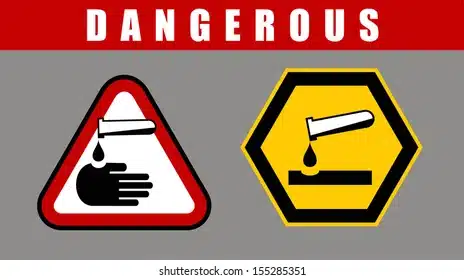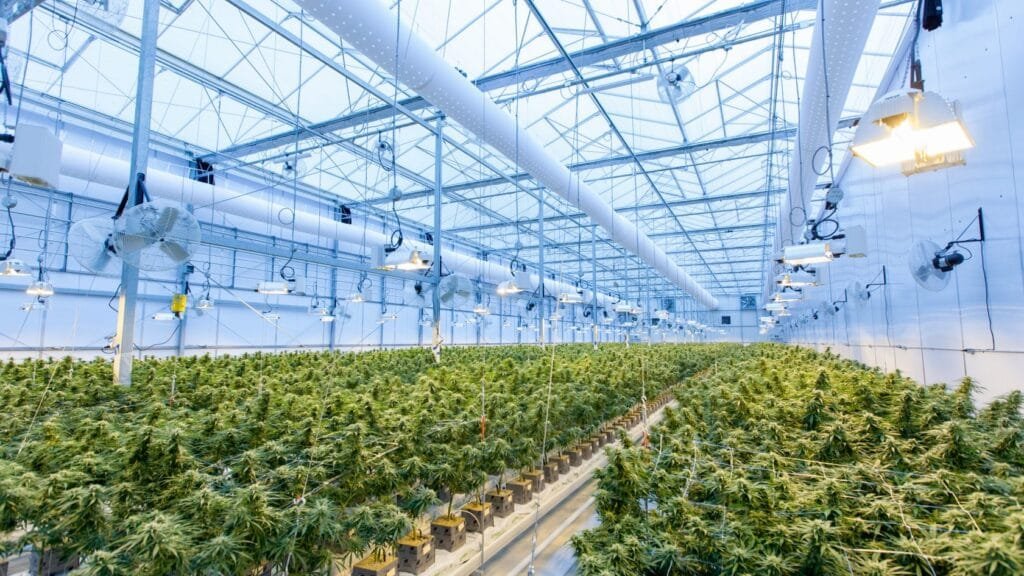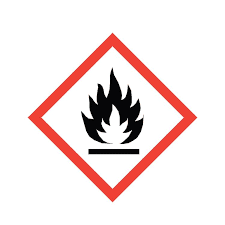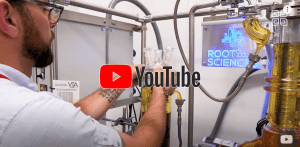In the cannabis industry, distillation is a process that plays a crucial role, whether it is extraction or purification. However, due to the nature of the processes, substances such as solvents require careful handling. This article outlines comprehensive safety measures for cannabis distillation, covering various aspects, from understanding potential risks to implementing emergency response plans and regulatory compliance.
Cannabis distillation involves using volatile compounds, high-pressure equipment, and potentially hazardous chemicals. It risks workers, facilities, and the environment if not managed carefully. This makes strict safety protocols mandatory in cannabis processing to mitigate risks, protect the workforce, and ensure the production of high-quality, safe products for consumers.
Sections
ToggleUnderstanding the Risks in Cannabis Distillation

Cannabis distillation in a production environment is risky because of the inherent dangers that arise from handling large volumes of solvents, cannabis, and large heating equipment. Producers must understand the associated risks to help manage these hazards.
1. Handling Flammable Solvents
One of the most significant risks in cannabis distillation is the use of highly flammable solvents such as ethanol, butane, and propane. These are the most common solvents used for extracting cannabinoids due to their efficiency. If not handled properly, they can result in severe fire and explosion risks.
2. High-Pressure Equipment
Most closed-loop equipment, such as distillation columns used for cannabis distillation, operate at pressures much higher than atmospheric pressure. Equipment failure is risky and can lead to leaks and explosions if improperly maintained or operated.
3. Chemical Exposure
Not only solvents but cannabis distillation may involve the use of other chemicals for winterization, filtration, or purification. There is a risk of health issues due to exposure to these chemicals through inhalation, skin contact, or accidental ingestion.
4. Working with Heat
Working with hot surfaces, steam, and other heat sources needs careful handling. The distillation process requires the application of heat to separate different compounds based on their boiling points. Workers must always wear safety gear when handling heating equipment.
The consequences can be severe if a producer fails to address these risks adequately. The risk can be small, such as accidents like slips, falls, burns, and other physical injuries, or as severe as explosions. Also, improper handling of solvents or inadequate cleaning procedures can lead to product contamination, potentially harming consumers and damaging the company’s reputation.
Proper Ventilation and Air Filtration

Handling solvents, processing cannabis, or distilling the extracts, almost every process generates fumes and vapors. That’s why cannabis distillation facilities must have adequate ventilation. Ensure your facilities have proper ventilation and air filtration to maintain a safe working environment and produce high-quality products.
Importance of well-ventilated workspaces
Adequate ventilation significantly reduces the risk of workers inhaling harmful fumes from solvents and other chemicals. It is essential to prevent both acute and chronic health issues. Not only is it adverse for the worker’s health, but adequate air circulation prevents flammable solvent vapor buildup, reducing the risk of fire and explosion. Good ventilation regulates the workspace temperature, maintaining optimal conditions for the distillation process.
Installing air filtration systems
There are several types of filtration systems that cannabis distillation facilities can consider. For the highest purification, activated carbon filters can remove 99% odors and volatile organic compounds (VOCs). Also, HEPA or high-efficiency particulate air filters effectively capture fine particles and maintain clean air quality.
Any air filtration system you choose should be installed with the facility’s heating, ventilation, and air conditioning (HVAC) system for optimal performance.
Regular Inspection and Maintenance
- Monitor air quality within the facility by installing air quality monitors.
- Conduct weekly visual inspections of all ventilation components.
- Perform monthly checks on filter efficiency and replace filters as needed.
- Schedule quarterly professional inspections of the entire system.
- Strictly follow filter replacement timeline according to manufacturer recommendations or more frequently if needed.
Maintaining proper ventilation with air filtration systems is a crucial part of the overall cleaning and maintenance process in cannabis distillation facilities, helping to reduce health and safety risks associated with airborne contaminants.
Handling Volatile Solvents and Chemicals Safely
Volatile solvents and chemicals are integral to the cannabis distillation process. Producers must establish protocols for the proper storage, handling, and disposal of these materials to prevent accidents.
1. Use of solvent-resistant containers for proper storage
Always store the solvents and chemicals in containers specifically designed for the solvent. Generally, stainless steel or high-density polyethylene (HDPE) containers are required for storing the chemicals. Ensure all containers are properly labeled with contents, hazard warnings, and filling date.
Your staff must have proper storage guidelines regarding how to store solvents. Always store solvents in a cool, dry area away from direct sunlight and heat sources. Use approved flammable storage cabinets that meet OSHA and NFPA standards for storing flammable chemicals.
2. Ensuring proper training for handling volatile solvents
Do not let just any worker handle solvents or chemicals. First, a comprehensive training program should be created covering the properties and hazards of each solvent used. Include hands-on training in the program, teaching proper handling techniques, PPE usage, and emergency procedures. To ensure your staff is properly trained for handling volatile solvents, conduct periodic assessments to ensure retention of knowledge and skills.
3. Protocols for safe transport and disposal
Internal and external transport protocols should be implemented depending on the facility’s structure and where the storage facility is located. Ensure workers use approved safety cans or carts designed to move flammable liquids within the facility. Comply with Department of Transportation (DOT) regulations for transporting hazardous materials.
Develop a comprehensive waste management plan that complies with local and federal regulations. Only hire licensed hazardous waste disposal companies for safe and legal removal of waste solvents and chemicals.
Fire and Explosion Prevention

Cannabis distillation facilities must have fire and explosion prevention mechanisms due to using flammable solvents and high-pressure equipment. Implementing robust fire and explosion prevention measures will protect workers, equipment, and the facility.
1. Implementing fire suppression systems
Fire suppression systems must be installed everywhere where combustible solvents and chemicals are present. It includes the correct fire extinguishers, such as Class B extinguishers for flammable liquid fires.
The facility holding distillation equipment must have an automatic sprinkler system for the specific hazards of cannabis distillation. Furthermore, fire alarm systems and unique hazard suppression systems like foam or clean agent systems are recommended in areas with high concentrations of flammable liquids.
2. Installing explosion-proof equipment and spark-proof ventilation
Explosion-proof electrical equipment is a system designed to operate in facilities where flammable vapors may be present. These equipment are designed to be safe in such conditions and ensure that vapors don’t ignite.
Spark-proof ventilation systems are designed to prevent the generation or transmission of sparks. These systems have non-sparking fan blades and static-dissipative ductwork with proper grounding and bonding for all ventilation components.
3. Regular inspection and maintenance of electrical systems
Installing advanced safety systems is not enough; regular inspection and maintenance are also mandatory. Conduct regular visual inspections of all electrical equipment and wiring. Perform thermal imaging scans to detect potential hotspots or overloading. Regularly assess the condition and suitability of electrical equipment to ensure that any outdated or worn equipment is not risking the facility.
Cannabis Compliant Gear - Personal Protective Equipment (PPE)

Personal Protective Equipment (PPE) is a crucial component of safety not only in cannabis distillation facilities but in every industry. There are several types of PPE, so selecting the appropriate equipment is necessary.
Importance of wearing PPE
Depending on the responsibilities of the workers, provide them with the right type of PPE, including:
- Gloves: Chemical-resistant gloves to protect against solvent exposure and burns.
- Safety glasses: To protect eyes from chemical splashes or vapors.
- Fire-resistant clothing: Made from particular fabric to protect against flash fires or chemical splashes.
- Respirators: Workers working in high-risk areas need respirators for protection against inhalation of solvent vapors or particulates.
- Other gears: Non-slip, chemical-resistant footwear and face shields.
Providing PPE is not only for protection but also for compliance. Compliance with industry-specific safety standards for cannabis processing, such as OSHA regulations, makes PPE mandatory in the workplace.
Training workers on the proper use and disposal of PPE
PPE is a special kind of protective wear; your staff must understand how to use it properly. Provide hands-on demonstrations and practice sessions for proper donning and doffing of PPE. Workers must be aware of the limitations of each type of PPE and when replacement is necessary. Employees should know the correct methods for disposing of used or contaminated PPE when replacement is due.
Equipping the Lab with Emergency Safety Equipment
For lab setups, take additional precautions:
- Install ANSI-compliant emergency eyewash stations. These stations must be easily accessible throughout the facility.
- Install safety showers in areas where large-scale chemical exposure is possible. There should always be clear access to safety showers, free from obstacles.
- Maintain well-stocked first-aid kits in multiple locations throughout the facility. Include items specific to chemical exposure treatment, such as burn gels and eye wash solutions.
Equipment Maintenance and Inspection
Another crucial aspect of cannabis distillation facility safety is the proper maintenance and regular inspection of distillation equipment. Let’s explore the key practices for maintaining equipment integrity and preventing accidents or product contamination.
Routine checks of distillation equipment
- Implement daily inspections of all equipment before starting operations each day. Any wear, damage, or leaks in vessels, pipes, and fittings must be immediately reported.
- Implement a regular leak detection program using appropriate methods (e.g., soap bubble tests and electronic leak detectors).
- Install pressure and temperature monitoring systems that continuously monitor critical parameters during operation.
Following the manufacturer’s guidelines for equipment maintenance
Strictly follow the maintenance schedule based on manufacturer recommendations for each piece of equipment. Implement a digital maintenance management system to track schedules and log completed work. Ensure that parts are lubricated and maintained as per manufacturer guidelines.
Ensuring qualified technicians perform repairs and calibrations
It is not uncommon for producers to choose to go with unqualified technicians to save money on maintenance and repairs. However, in doing so, they risk the integrity of the entire setup. Always hire or contract technicians who have specific experience with cannabis distillation equipment. Before you hire, verify the certifications and training credentials of all technicians.
Emergency Preparedness and Response Plan
Keeping your employees prepared for the worst-case scenario is necessary for emergency response. Emergency preparedness can ensure the safety of personnel and minimize potential damage in cannabis distillation facilities.
Developing an emergency response plan
- Begin with a thorough risk assessment to identify potential emergency scenarios specific to cannabis distillation operations. Depending on the cause and effect, prioritize risks based on likelihood and potential impact.
- Prepare a dedicated emergency response team with clearly defined roles and responsibilities among the workforce. It will ensure your workers can follow the team members in emergencies.
- Develop clear evacuation routes and mark them visibly throughout the facility. Ensure these routes are accessible and free from obstacles at all times.
- Implement multiple communication methods such as alarms, PA systems, and mobile alerts for reporting emergencies.
Conducting regular safety drills
To ensure your staff is always prepared to evacuate safely, conduct regular drills for various emergency scenarios, including fire evacuation, chemical spills, and equipment failure.
Schedule the drills at different times and days to cover all shifts. Follow up with a thorough debrief after each drill to discuss performance and identify areas for improvement.
Employee Training in Emergency Protocols
Cannabis processing facilities should include comprehensive emergency response training in their onboarding process. Moreover, regular refresher training sessions on emergency procedures should be conducted for all employees. This will provide practical, hands-on training sessions to handle equipment such as fire extinguishers and spill containment techniques.
Compliance with Regulations and Safety Standards
In the end, it is mandatory to adhere to regulations and safety standards for legal compliance and the safe operation of cannabis distillation facilities.
Staying up-to-date with local and federal safety regulations
Be aware of the local and federal safety regulations, mainly designed for the cannabis industry. It is better to hire a legal team to monitor changes in local, state, and federal laws relevant to cannabis processing and chemical handling. Subscribing to industry newsletters, government alerts, and professional associations helps in staying updated on regulatory changes.
Obtaining necessary licenses and certifications
While more States are legalizing cannabis, at the federal level, it remains a Schedule I Substance, which means it has strict licensing requirements. Research and understand all licensing requirements for cannabis processing in your jurisdiction. Also, keep a checklist of required licenses and their renewal dates.
Identify industry-specific certification programs demonstrating a commitment to safety and quality, such as Good Manufacturing Practices (GMP) or ISO standards.
Working with regulatory bodies
Establishing relationships with relevant regulatory bodies and inspectors can help with compliance. Designate a primary point of contact within your organization for interactions with regulatory agencies. Promptly report any significant incidents or compliance issues to the appropriate authorities and seek guidance from regulatory bodies when unclear about the interpretation or application of specific regulations.
Conclusion
Implementing safety protocols in cannabis distillation facilities is essential for protecting workers, ensuring product quality, and maintaining regulatory compliance. Understanding the specific hazards associated with cannabis distillation and taking proactive prevention steps will ensure safety. Still, an emergency response plan must be in place, and continuous training must be provided to maintain a safety culture.




